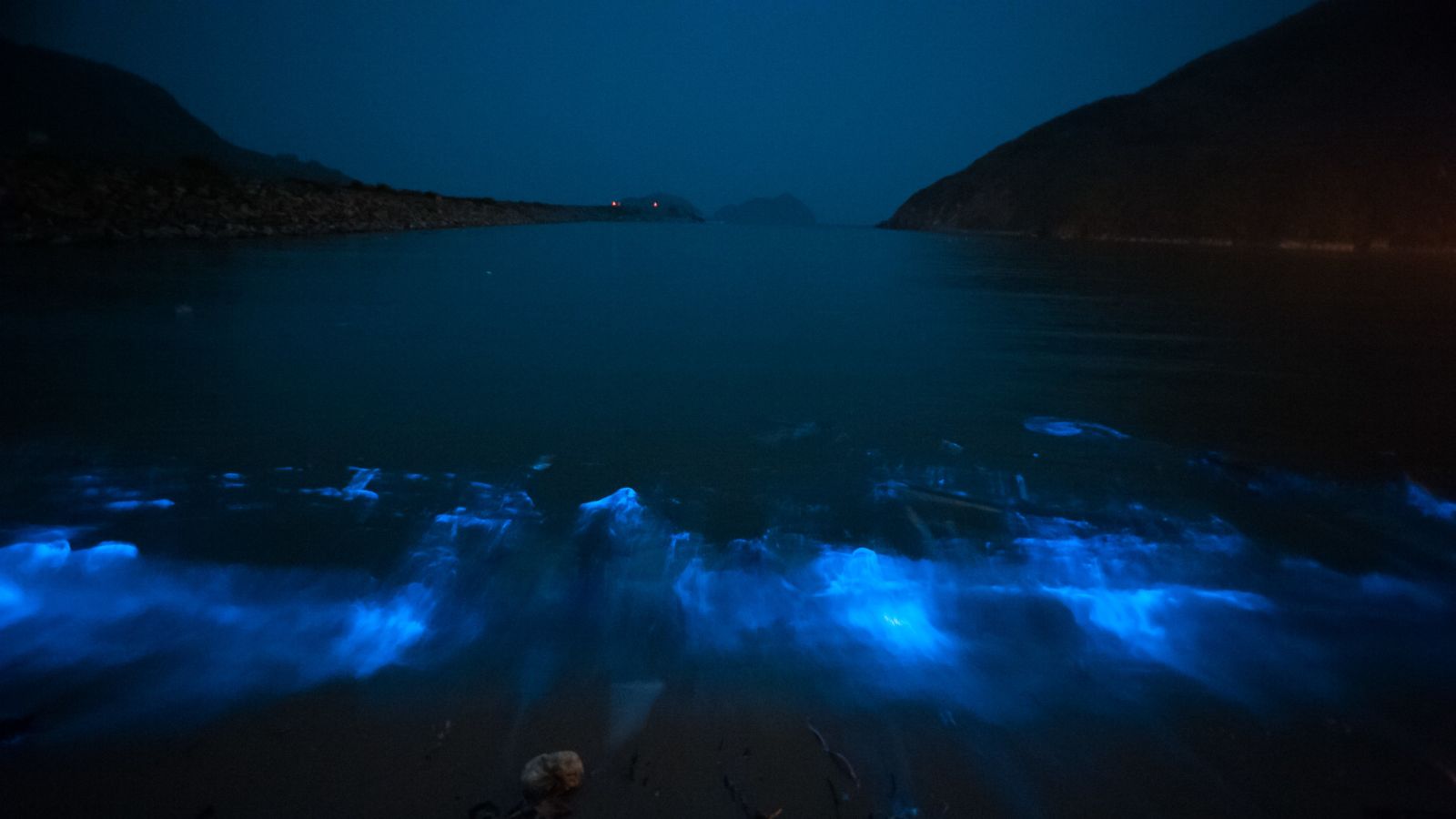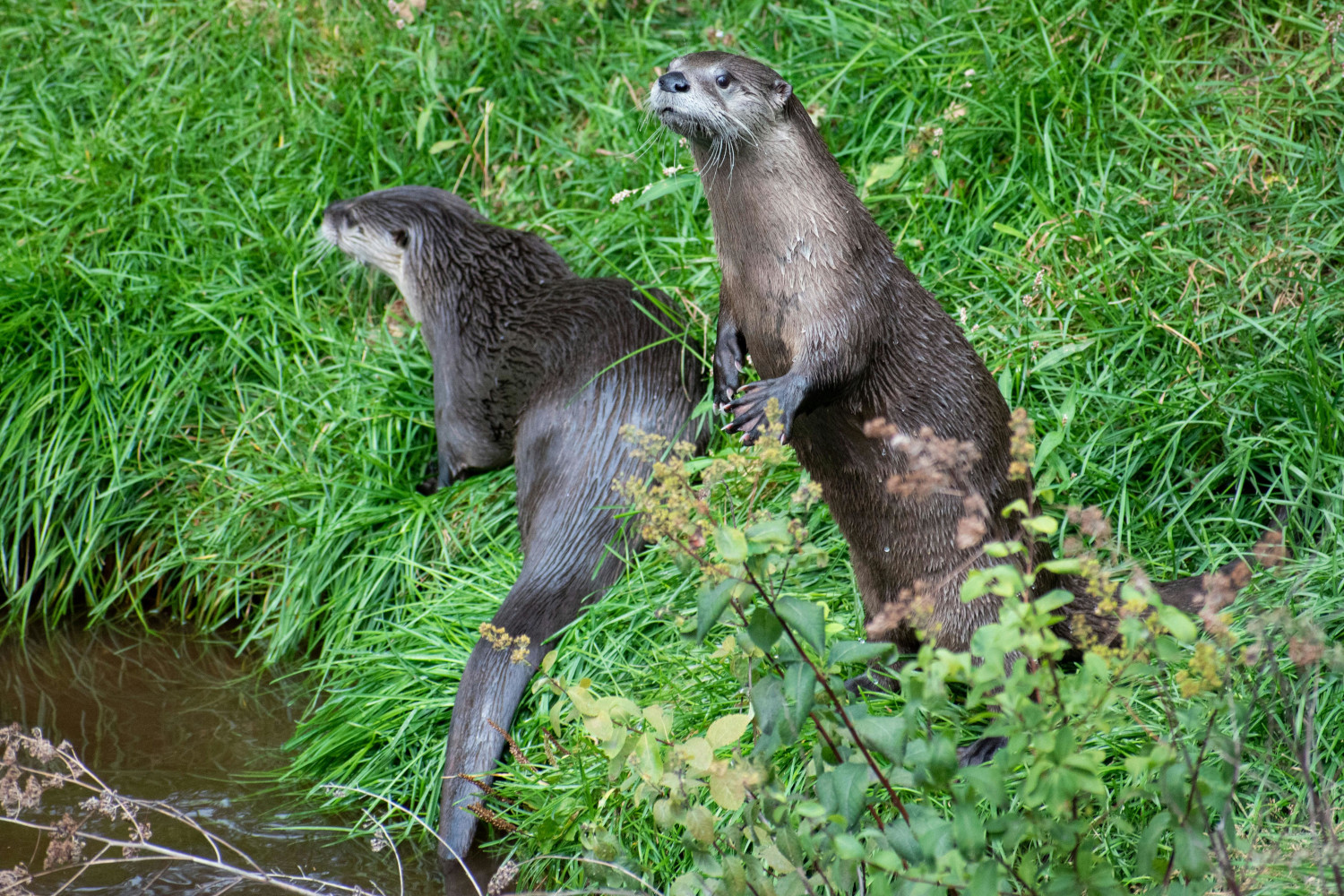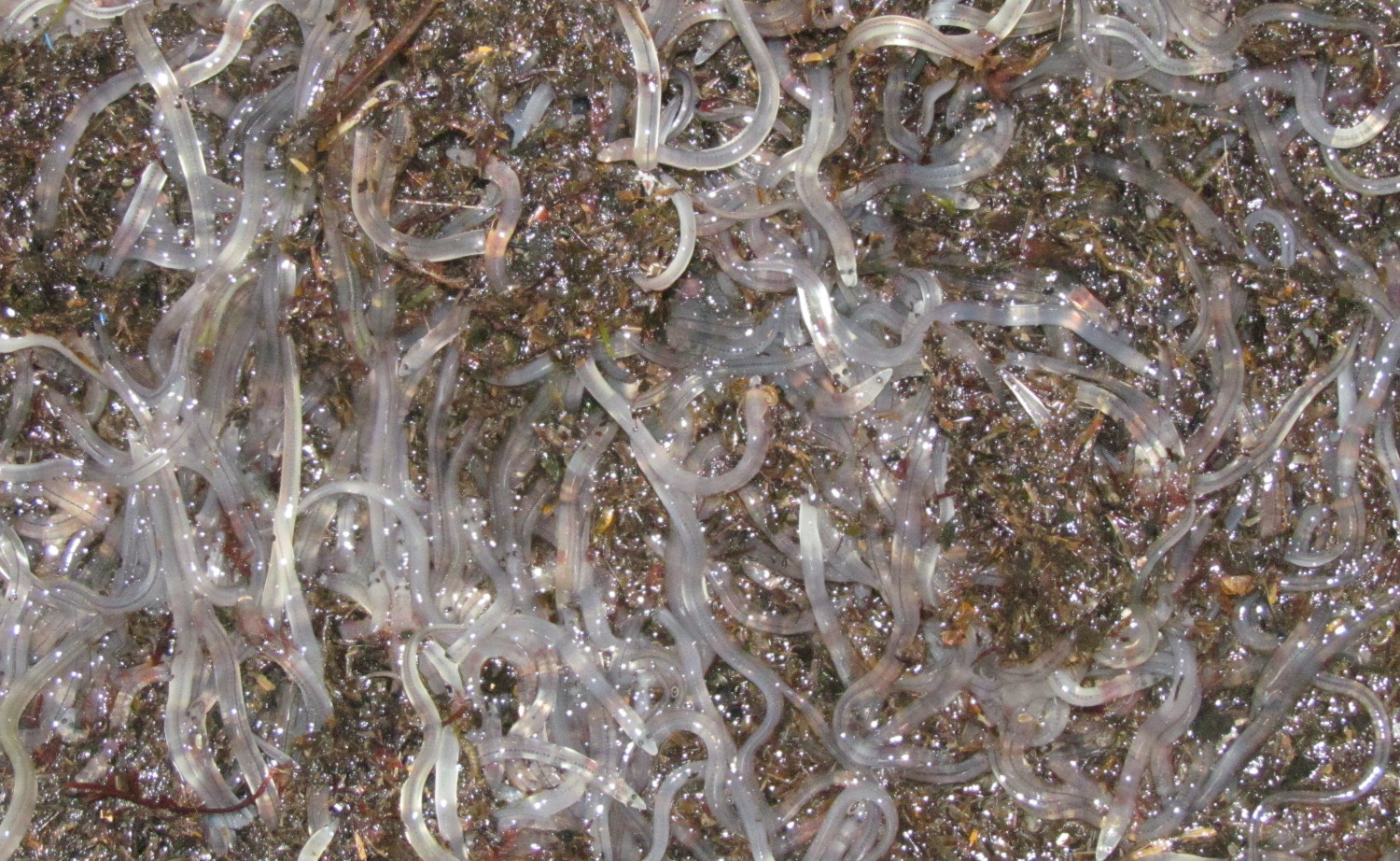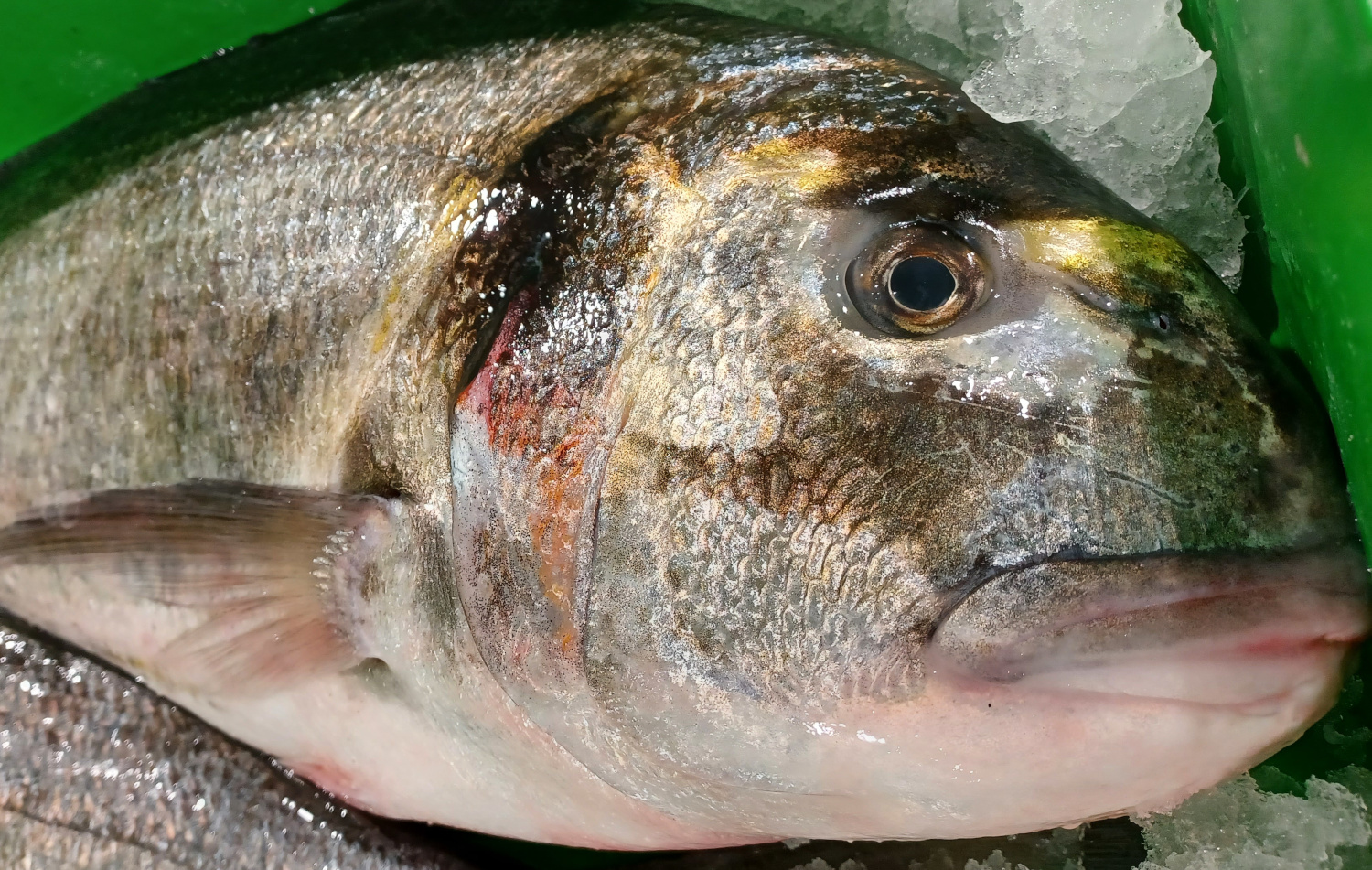Salt fireflies
- What a wonder is the ability to generate light, no? Fireflies, relatives of beetles, are the brightest beings on earth, but there are also in the sea, in the oceans, a number of glowing violuminiscent beings.

Blue teardrop (Noctiluca scintillans)
Group: Marine dinoflagellate / Protista: organisms that are not animals, plants or fungi.
Size: Between 200 and 2,000 microns.
Where does he live? On the high seas, pelagically, in warm, cold and temperate waters.
What do you eat? Plankton: diatoms, dinoflagellates, bacteria, copepods and fish eggs.
Create the red tides: High concentrations of plankton, the main food source of this species, as well as seasonal conditions, cause a massive reproduction of the blue tear, resulting in the phenomenon known as “red tide”.
76% of marine animals are violuminous, of all sizes, from the smallest crustaceans to the big sharks, to the giant chipirones. We can therefore say that the sea is full of “fireflies”, although they are not easy to see, as most are deep-sea species.
But how does a living being produce a light? Nature presents us with different ways. Photoforum is a light-emitting organ through certain chemicals, such as luziferine, which appears in some marine animals with light points, easily seen in fish and cephalopods. This organ can be simple or as complex as the human eye, as it contains lenses, color filters and reflectors. On the other hand, there are other animals that can produce light from substances that they absorb in prey liserics either through specialised cells (photocytes) or with the help of symbiotic bacteria that the organism has.
The most famous animals with violuminiscence are abisopelagic fish, i.e. those that live in the oceans at depths between 4,000 and 6,000 meters without sunlight. On the other hand, lophiform fish have a glowing bait of meat to attract and choke their prey, as an advanced fishing technique. Do you remember the lantern fish from Nemo's movie? For the toad we buy in the fishmongers (Lophius budegassa) also belongs to the same family. Giant Chipirones found in Asturias (Architeuthis sp.) They're also bioluminescent, using light to hunt prey. During the day they are in deep waters and during the night they move to smaller depths to hunt. As the dams get closer, they dazzle them with a strong glow of light, like a flash light from a camera.
Some deep-water sharks, like the Dalatia licha, control light production through hormones like melatonin or prolactin. The world’s smallest sharks (15 cm), for their part, flashlight sharks (Etmopterus perryi) proudly show the light of the photoforums that have members of the same species in their sexual organs for self-promotion, thus increasing the chances of finding partners in dark and deep waters.

We cannot fail to present this last example: our marine “salty firefly”. In the Gulf of Bizkaia we have a dinoflagellate, known as blue tear or light spark, which is illuminated with a chemical reaction similar to fireflies (Noctiluca scintillans). This single-celled organism, which is part of the marine plankton, produces light through the oxidation process of the luziferine molecule. When these tiny organisms get excited by sea surface vibrations, either by waves or by the presence of other organisms, they produce light. If on our coast you can sail by boat at night, this is, in a nutshell, your experience: at the end of a boat, dolphins jumping at the proa keel, in the light of a lunar sickle and through the backs of mammals, plankton violence. A unique spectacle impregnated with sparks, splashes and “salty fireflies”. If there is no boat, the other option is to contemplate the light provided by the waves that reach the beach. But, yes, you'll need it on a pretty wild beach, no light pollution, because those wonders that light up inside of us are not so visible.
Itsasoan badira landareen itxura izan arren animalia harrapari diren izaki eder batzuk: anemonak. Kantauri itsasoan hainbat anemona espezie ditugun arren, bada bat, guztien artean bereziki erraz atzemateko aukera eskaintzen diguna: itsas-tomatea.
Ugaztunei eskainitako azken artikuluaren amaierako hitzak hurrengo animalia aurkezteko aitzakia paregabea dira. Bertan esaten genuen muturluzeak erreka “garbi eta txukunak” behar dituela, kutsadurarik gabeak baina elementu natural anitzekin. Animalia txiki horren... [+]
Antxoa, bokarta edo albokartia, gure arrain komertzialen artean txikiena, euskal kostaldera hurbildu da.
Katalanen ustetan artzainak engainatzen omen ditu hegazti honek: “enganyapastors”. Espainiar eta latindarrek, aldiz, ahuntzari esnea kentzen diola diote, hortik datorkio hain zuzen ere izen zientifikoan (Caprimulgus europaeus) islatzen den caprimulgus (capra... [+]
Leihatila honetan behin baino gehiagotan azaldu ditugu Ama Naturaren engainuak bere izakiak babestearren. Batzuetan, erle edo liztor itxura zuten euliak ekarri ditugu, beste batzuetan inongo arriskurik ez duten arrisku-kolorazioko intsektuak ere bai (kolorazio aposematikoa... [+]
Nekazal eremu lehor baten erdian ageri da putzua. Txikia da tamainaz, eta ez oso sakona. Egunak dira euririk egiten ez duela, baina oasi txiki honek oraindik ere aurretik bildutako urari eusten dio. Gauak eremua irentsi du eta isiltasunaren erdian kantu bakarti bat entzun da... [+]


















